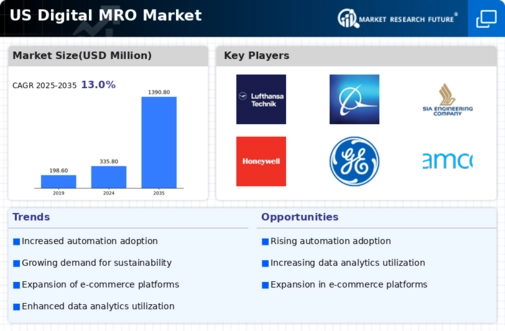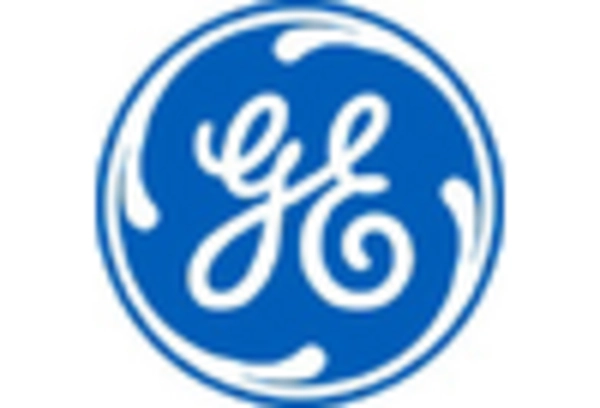Market Analysis
In-depth Analysis of US Digital MRO Market Industry Landscape
In the realm of Maintenance, Repair, and Operations (MRO), the availability of aftermarket parts is a critical factor directly influencing efficiency and customer satisfaction. Traditional distribution channels, encompassing suppliers, dealers, and distributors, grapple with challenges such as extended turnaround times, resource mismanagement, and backlogs, thereby adversely impacting the supplier-customer relationship. However, the advent of e-commerce platforms within distribution networks has emerged as a transformative force, revolutionizing the accessibility and efficiency of aftermarket parts. This paradigm shift not only enhances operational dynamics but also presents a lucrative opportunity for players in the global digital MRO market during the forecast period. Conventional distribution channels have long faced inherent drawbacks that impede their effectiveness. Lengthy turnaround times in fulfilling orders, coupled with challenges in managing parts and resources, create bottlenecks in the supply chain. Backlogs further exacerbate these issues, emphasizing the necessity for a paradigm shift in distribution strategies within the MRO landscape. The integration of e-commerce platforms into distribution networks marks a pivotal advancement in the MRO ecosystem. These platforms introduce a paradigm of efficiency, enabling aftermarket parts providers to address key challenges inherent in conventional channels. A transformative aspect is the ability of suppliers to accurately forecast the demand for parts. E-commerce platforms empower suppliers to gauge the number of anticipated orders, allowing for efficient resource and time management. One significant advantage offered by e-commerce platforms is the streamlined management of resources. Traditional channels often struggle with allocating resources effectively, leading to delays and operational inefficiencies. E-commerce platforms provide suppliers with real-time insights into the demand for aftermarket parts, enabling them to allocate resources judiciously. This proactive approach ensures that the necessary resources are available to meet customer demands, ultimately reducing turnaround times and enhancing overall operational efficiency. Customers stand to gain significantly from the integration of e-commerce platforms into the MRO supply chain. The traditional process of selecting, ordering, and receiving aftermarket parts is often marked by prolonged turnaround times. E-commerce platforms revolutionize this experience by offering customers a user-friendly interface to easily select the required parts. The streamlined process allows for swift order placement, reducing the overall turnaround time. Additionally, customers benefit from cost comparisons and a transparent view of available inventory, fostering a more informed decision-making process. As the digital MRO landscape evolves, the availability of aftermarket parts through e-commerce platforms emerges as a key factor in reshaping supply chain dynamics. The agility and responsiveness afforded by these platforms contribute to the seamless functioning of the MRO ecosystem. In cases where certain parts are unavailable, suppliers can leverage their inventories and alternative resources to minimize delays and ensure timely delivery. The adoption of e-commerce platforms in the distribution of aftermarket parts presents a lucrative opportunity for players in the global digital MRO market. The transformative impact of these platforms on operational efficiency, resource management, and customer experience positions them as a critical component of the evolving MRO landscape. As the market continues to embrace digital advancements, e-commerce platforms are poised to play a significant role in driving growth and innovation within the digital MRO sector. In conclusion, the integration of e-commerce platforms into the distribution networks of the MRO industry is catalyzing a paradigm shift in the availability and accessibility of aftermarket parts. The challenges inherent in traditional distribution channels are being overcome by the efficiency, agility, and customer-centric approach of e-commerce platforms. As the digital MRO market unfolds, these platforms stand as a beacon of opportunity, offering a seamless and transparent experience for both suppliers and customers. The future of digital MRO is undoubtedly intertwined with the transformative potential of e-commerce platforms, ushering in a new era of efficiency, responsiveness, and innovation in the aftermarket landscape.

















Leave a Comment